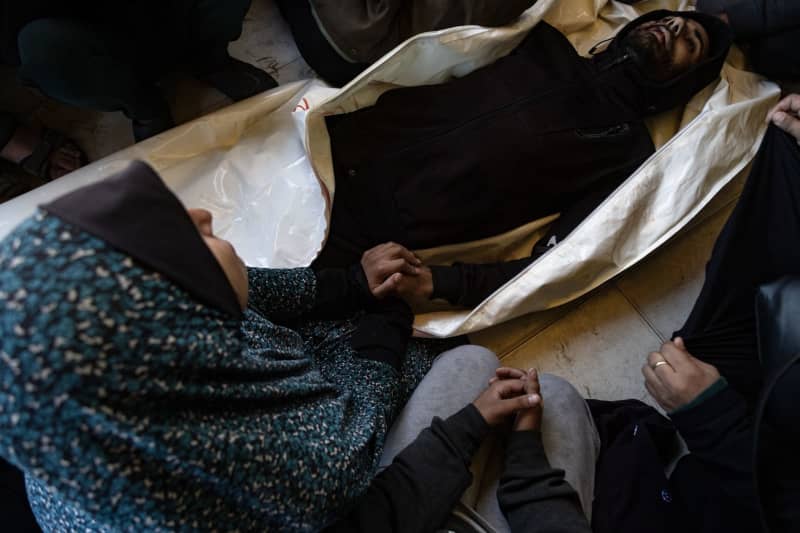On a recent Thursday, reports emerged from the Gaza Strip detailing a devastating Israeli airstrike, particularly in the refugee district of Nuseirat, where Palestinian medical sources indicated that at least 25 individuals were killed. This strike appears to have targeted residential buildings, fuelling a wave of injuries across the district. The Palestinian news agency WAFA reported that dozens of individuals were hurt due to the bombardment, with evidence circulating on social media showing medics transporting motionless and bleeding victims to hospitals. The casualties from this day reportedly contributed to a larger death toll in the ongoing conflict, as WAFA estimated a total of 70 fatalities across various locations in the Gaza Strip resulting from Israeli military actions.
Earlier in the day, WAFA confirmed that 38 of the deceased were victims from prior strikes on the Gaza Strip. These attacks included tragic incidents in which 13 individuals were killed while accompanying an aid delivery in southern Gaza, highlighting the collateral damage of the conflict. The strikes also impacted civilians in central and northern Gaza, leading to loss of life among women and children. Amidst these reports, the Israeli military maintained that their operations were solely focused on Hamas militants, claiming that they conducted targeted strikes based on intelligence regarding armed groups in southern Gaza. Israel asserted that these operations aimed to safeguard humanitarian aid routes from potential Hamas threats, emphasizing their commitment to mitigating civilian risk during the ongoing military engagement.
The situation in Gaza escalated significantly after Hamas initiated a violent offensive against Israel on October 7, 2023, resulting in over 1,200 fatalities in Israel. Since that event, Palestinian reports indicate that more than 44,800 individuals have died in the Gaza Strip amidst the concerted Israeli military response, marking a profound humanitarian crisis. Notably, a recent strike in Gaza City specifically targeted a former school building converted into a Hamas command center. The Israeli Defense Forces (IDF) reported that high-profile members of Hamas, including a lead figure in the organization’s weapons production and other operatives tied to the initial attack on October 7, were killed in this operation.
Despite the Israeli military’s assertions that targeted strikes are intended to dismantle malignant threats, the verifiable outcomes indicate that civilian casualties remain alarmingly high, according to Palestinian sources. The complex dynamics of warfare, especially seen in areas with substantial civilian populations, raise critical ethical questions regarding military engagement and the protection of innocent lives. While the IDF maintains that it employs strategies to reduce harm to non-combatants, Palestinian reports frequently contradict this narrative, suggesting that strikes often impact residential areas and result in tragic loss of civilian life.
In stark contrast, the Palestinian perspective underscores the dire humanitarian impact of these military operations, particularly in refugee zones where families seek shelter. Reports from civilians indicate a desperate need for assistance amid the chaos, with many fleeing violence and finding refuge in precarious conditions, as exemplified by the tragic incident involving aid personnel near Khan Yunis. This situation has led to widespread grief and confusion among the affected populations, significantly complicating the humanitarian response amid ongoing battles.
The conflict continues to escalate, with both sides exchanging devastating blows resulting in loss, grief, and escalating tensions. As reported by various sources, the airstrikes appear to be part of a broader military strategy rooted in the ongoing war initiated by Hamas, which drastically reshaped civilian life in Gaza and prompted international concern over human rights violations. Where the situation leads next remains uncertain; however, the insistence on targeted strikes against perceived military installations underscores the deeply rooted complexities of the Israel-Palestine conflict, demanding careful consideration from the global community to seek avenues for peace and de-escalation.

